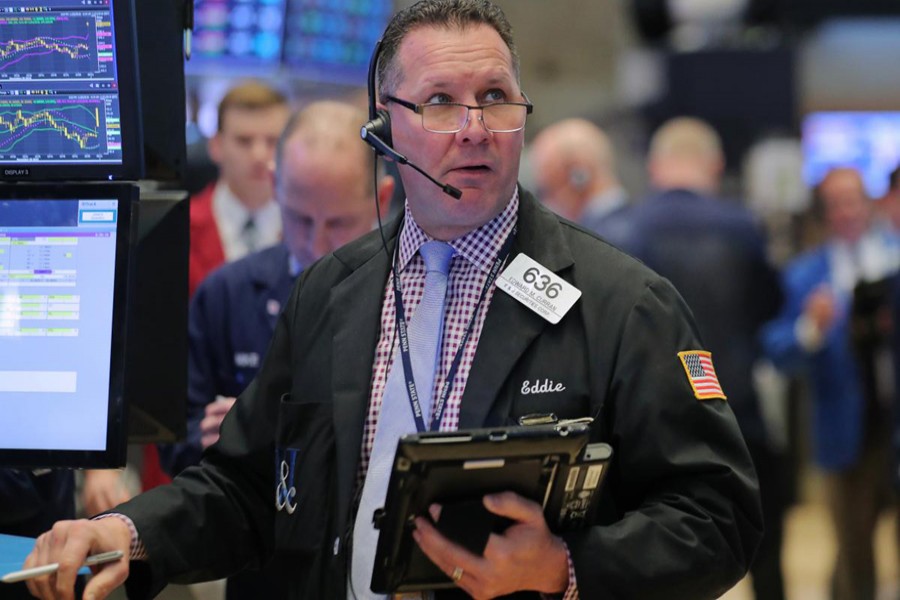US stocks closed lower in a shortened post-holiday trading session on Friday as the energy sector tumbled on continued weakness in oil prices, and the benchmark S&P 500 confirmed its second correction of 2018.
The three major US indexes all fell well over 3 per cent for the week, with the Dow industrials and the Nasdaq posting their biggest weekly per centage declines since March.
The S&P 500 ended about 10.2 per cent down from its Sept. 20 closing record high, confirming it had entered a correction.
The S&P last entered a correction earlier this year after posting a then record high in late January, and falling more than 10 per cent by early February. That correction lasted roughly seven months, until the index posted a fresh record high in late August.
On Friday, the S&P 500 energy sector .SPNY fell 3.3 per cent, dragged down by another plunge in oil prices, amid fears of a supply glut even as major producers consider cutting output. Oil prices have plunged some 30 per cent since the start of October.
Shares of oil majors Chevron (CVX.N) and Exxon Mobil (XOM.N) dropped 3.4 per cent and 2.7 per cent, respectively.
Aside from energy, declines in Apple (AAPL.O) and Amazon (AMZN.O) weighed on the S&P 500, underscoring the drop in technology and internet stocks that has marked this latest swoon in equities.
“I see this as a continuation of the market trying to come to terms with slower growth next year,” said Alicia Levine, chief market strategist at BNY Mellon Investment Management in New York. “Today’s price action is part of that story.”
The Dow Jones Industrial Average .DJI fell 178.74 points, or 0.73 per cent, to 24,285.95, the S&P 500 .SPX lost 17.37 points, or 0.66 per cent, to 2,632.56 and the Nasdaq Composite .IXIC dropped 33.27 points, or 0.48 per cent, to 6,938.98.
Trading volume was relatively light with the session ending at 1 pm ET following the Thanksgiving Day holiday, so the day’s action might carry less significance.
Volume on US exchanges was about 3.4 billion shares, well below the 8.2 billion average for the full session over the last 20 trading days.
“When everyone comes back, we’ll get a clearer indication of what it might look like for the rest of the year,” said John Carey, managing director and portfolio manager at Amundi Pioneer Asset Management in Boston. “Today just confirms the recent weakness due to persisting worries about the economy and the effect of higher interest rates on price-to-earnings multiples, borrowing costs and so forth.”
US shoppers formed long lines at store checkout counters on Black Friday to snap up deep discounts on clothing and electronics, offering evidence of stronger consumer spending at the start of retailers’ make-or-break holiday season.
The S&P 500 retailing index .SPXRT fell 0.6 per cent.
United Technologies Corp (UTX.N) rose 2.6 per cent after the company won Chinese regulatory approval to buy aircraft parts maker Rockwell Collins Inc (COL.N). Rockwell shares jumped 9.2 per cent.
Investors will be focusing on next week’s G20 summit in Buenos Aires, where US President Donald Trump and his Chinese counterpart Xi Jinping are expected to hold talks amid a trade dispute that has weighed on financial markets.
Declining issues outnumbered advancing ones on the NYSE by a 1.36-to-1 ratio; on Nasdaq, a 1.17-to-1 ratio favoured advancers.
The S&P 500 posted 1 new 52-week highs and 19 new lows; the Nasdaq Composite recorded 15 new highs and 74 new lows.


